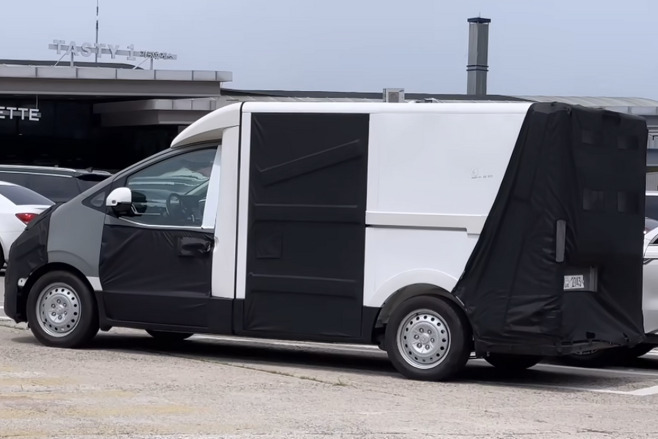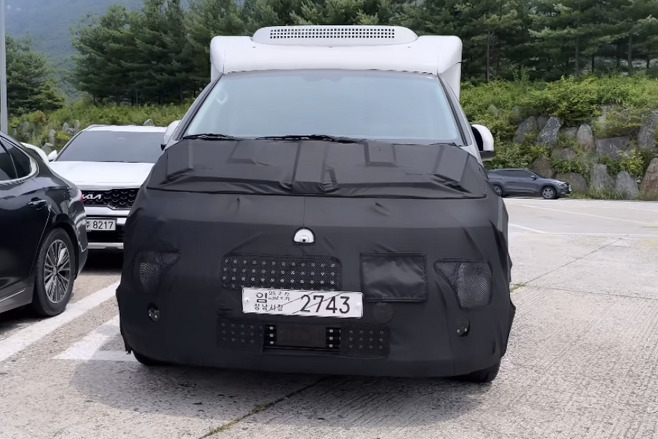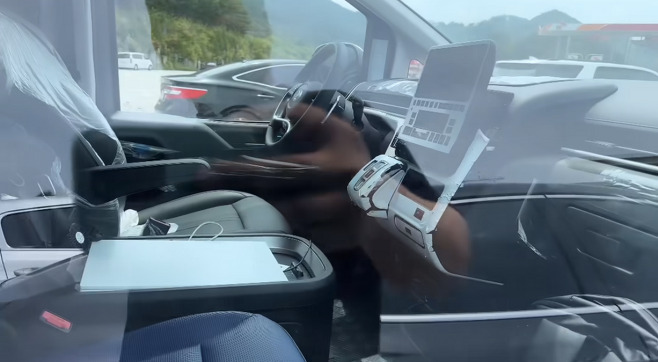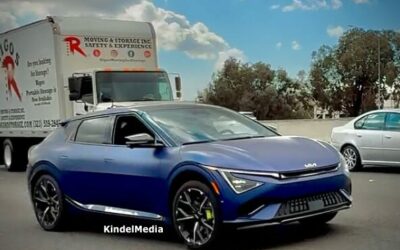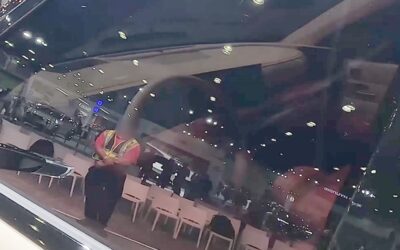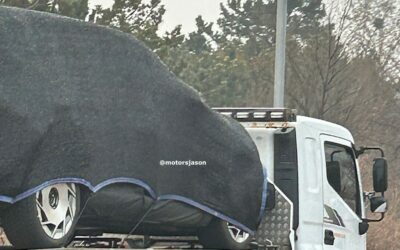Hyundai-KIA PBV is an ambitious plan for PBV (purpose built vehicles) and our colleagues at Motorsjason captured a mysterious Staria truck being connect into a charging station, so you could image Hyundai is testing a Porter EV substitute, but looking closer at this mule you will see it has a sticker that says “PBV Lab”.
Kia already decided to build a dedicated purpose-based vehicle (PBV) factory in Hwaseong. The first dedicated PBV is planned to be introduced in 2025 after completion of the new plant in 2024. The goal is to become the number one player in the global PBV market by 2030.
PBV is a vehicle that specializes in providing delivery and logistics services in response to the rapidly growing e-commerce (e-commerce) market. If global logistics and distribution companies place an order according to the purpose, it is custom-made. General Motors (GM) and Toyota have already announced they’re entering this market.
In 2025, Kia plans to first introduce a mid-size PBV that provides services such as car-hailing and delivery. It is a mobility means equipped with an indoor height of up to 1.8m, durability of 600,000 km, over-the-air update (OTA), and level 4 fully autonomous driving. Next, it plans to release a micro-autonomous PBV optimized for small parcels and food delivery, a medium-sized robot taxi PBV, and a large PBV that can be used as a multi-seater shuttle that replaces existing buses.
The test mule spotted was an electric car, and it was possible to see a charging port cover installed in the front. The front of the vehicle is the same as Hyundai’s Staria, except for the charging port. A closed loading box with built-in rails is installed in the back, so you can guess that a sliding door has been applied.
The tail lamp has the same pixel graphics lamp as the existing Staria, and is expected to feature a surround view monitor as the camera is installed in the front and bottom of the side mirror. The interior is also the same as the vehicle served as donor for this test mule a regular Hyundai Staria.

